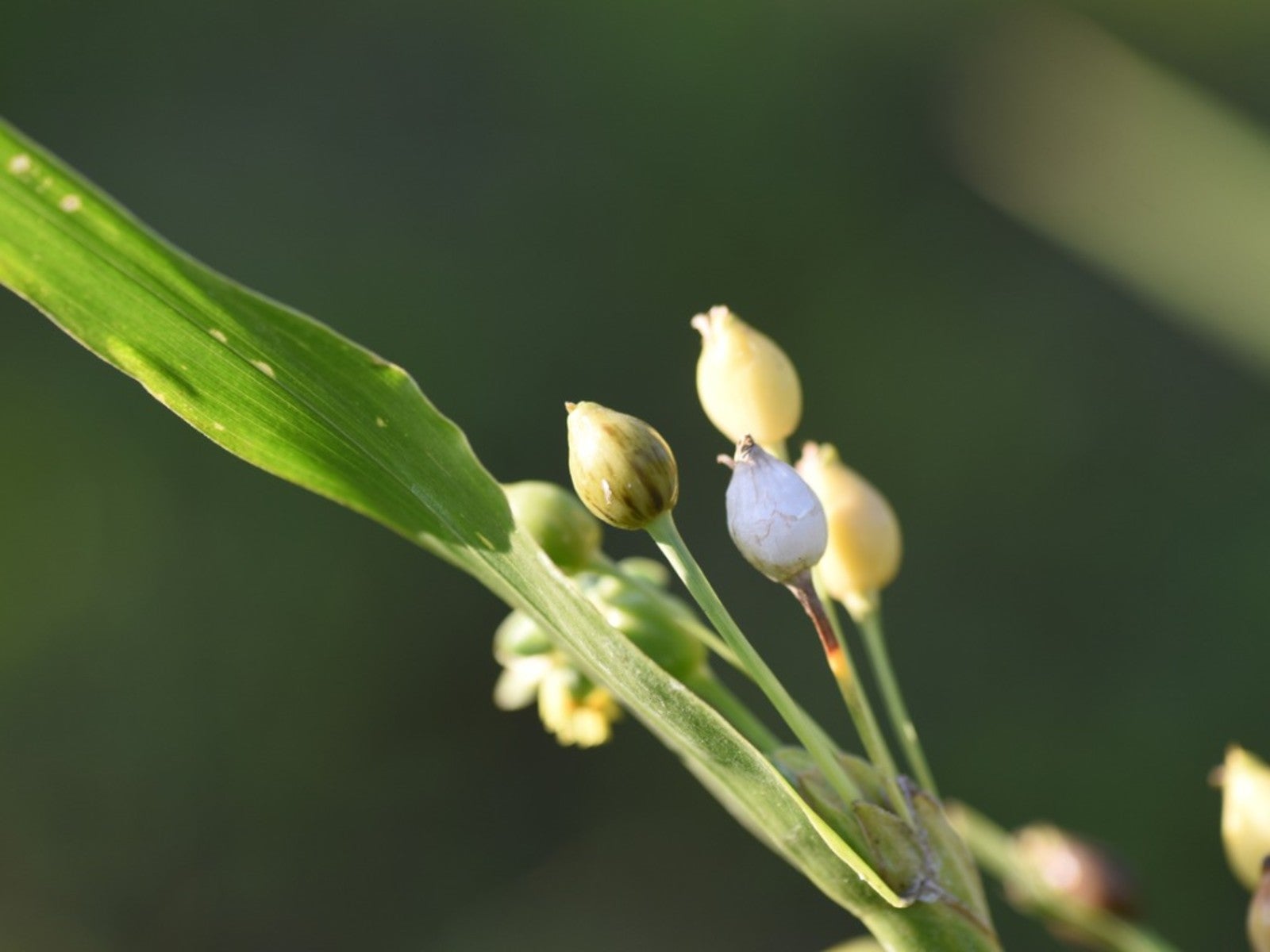Job's Tears Cultivation - Information About Job's Tears Ornamental Grass


Job's tears plants are an ancient cereal grain most often grown as an annual, but may survive as a perennial where frosts do not occur. Job's tears ornamental grass makes an interesting border or container specimen that may get 4 to 6 feet (1.2 to 1.8 m.) tall. These wide arching stems add graceful interest to the garden. Job's tears cultivation is easy and the plants start quickly from seed. In fact, the plant produces strings of seeds that resemble beads. These seeds make excellent natural jewelry and have a hole in the center that wire or jewelry thread passes through easily.
Job's Tears Plants
An ornamental grass, Job's tears plants (Coix lacryma-jobi) are hardy in USDA plant hardiness zone 9 but can be grown as annuals in temperate regions. The wide blades grow upright and arch at the ends. They produce spikes of grain at the end of the warm season, which swell and become the “pearls” of seed. In warm climates, the plant has a tendency to become a nuisance weed and will self-sow prolifically. Cut off the seed heads as soon as they form if you do not wish for the plant to spread.
Job's Tears Seed
The seeds of Job's tears are said to represent the tears shed by the biblical Job during the challenges he faced. Job's tears seeds are small and pea-like. They begin as grayish green orbs and then ripen to a rich tan brown or dark mocha color. Seeds that are harvested for jewelry must be taken when green and then set out in a dry location to dry fully. Once dry they change color to an ivory or pearly hue. Ream out the center hole in Job's tears seed prior to inserting a wire or jewelry line. Job's tears ornamental grass will self-sow and germinate readily when planted in moist loam. It is possible to save the seeds for an early spring sowing. Remove the seed in fall and dry them. Store them in a cool, dry location and then plant in early spring when all chance of frost has passed.
Job's Tears Cultivation
Job's tears plants reseed themselves annually. In areas where the grass is grown as a grain, the seeds are sown in the rainy season. The plant prefers moist soils and will pop up where ample water is available, but needs a drier season as the grain heads form. Hoe around young seedlings to remove competitive weeds. Job's tears ornamental grass does not need fertilizer but responds well to a mulch of organic material. Harvest the grass in four to five months, and thresh and dry the seeds for culinary use. Dried Job's tears seeds are ground and milled into flour for use in breads and cereals.
Job's Tears Ornamental Grass
Job's tears plants provide excellent texture foliage. The flowers are inconspicuous but the strands of seeds increase the ornamental interest. Use them in a mixed container for height and dimension. The rustle of the foliage enhances the soothing sound of a backyard garden and their tenacity will reward you with years of rich, green foliage and charming necklaces of pearly seeds.
Gardening tips, videos, info and more delivered right to your inbox!
Sign up for the Gardening Know How newsletter today and receive a free copy of our e-book "How to Grow Delicious Tomatoes".

Bonnie Grant is a professional landscaper with a Certification in Urban Gardening. She has been gardening and writing for 15 years. A former professional chef, she has a passion for edible landscaping.
-
 Looking For Plants To Give You The Soft And Fuzzies? Try These 5 Fuzzy Leaf Plant Options
Looking For Plants To Give You The Soft And Fuzzies? Try These 5 Fuzzy Leaf Plant OptionsLovers of texture, drama, silver foliage and tactile plants will adore these special sensory garden additions. These fuzzy leaf plant options will leave you all aglow
By Susan Albert
-
 Get Ready For A Summer Of Hummers! Grow These Full Sun Hummingbird Plants and Flowers
Get Ready For A Summer Of Hummers! Grow These Full Sun Hummingbird Plants and FlowersIf you’re lucky enough to enjoy a sunny backyard, make sure you are maxing out on your pollinator opportunities and grow these full sun hummingbird plants and flowers
By Tonya Barnett